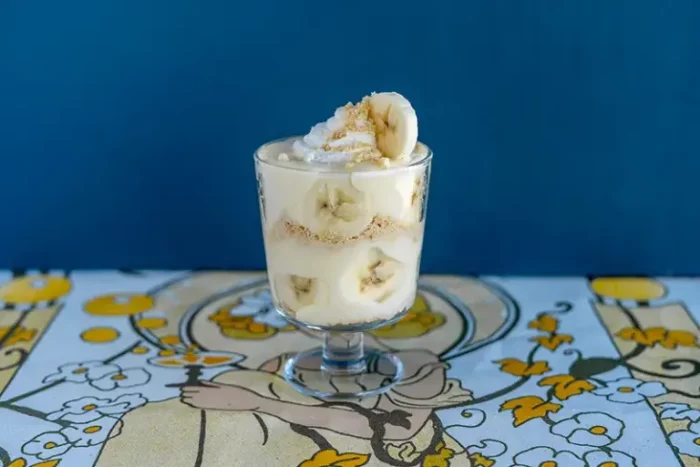High blood sugar, also known as hyperglycemia, is a common concern for people with diabetes or those at risk of developing the condition. Managing blood sugar levels is crucial for overall health, as prolonged high blood sugar can lead to serious complications like heart disease, kidney damage, and nerve problems. One way to help manage blood sugar levels is through diet, particularly the consumption of certain juices that can help regulate glucose levels.
In this article, we will explore which juices are beneficial for individuals with high blood sugar, explain why these juices work, and offer some tips on how to incorporate them into your diet.
Why Juice Matters for High Blood Sugar
Juice can be an effective way to help manage blood sugar levels, but not all juices are the same. When choosing juices for blood sugar management, it’s important to consider the glycemic index (GI), which measures how quickly foods raise blood sugar levels. Juices with a low GI are slower to increase blood sugar, while juices with a high GI can cause blood sugar to spike.
While whole fruits are usually the best option due to their fiber content, juices made from specific fruits and vegetables can still be helpful, especially when they are made fresh and without added sugar. Freshly pressed juices provide antioxidants, vitamins, and minerals that are beneficial for overall health.
Best Juices for High Blood Sugar
Here are some of the best juices to help manage high blood sugar:
1. Carrot Juice
Carrot juice is not only delicious but also beneficial for people with high blood sugar. Carrots are rich in beta-carotene and antioxidants, which help to lower inflammation in the body. The low glycemic index of carrot juice ensures it doesn’t cause rapid spikes in blood sugar levels.
Carrots are also a good source of fiber, which helps in stabilizing blood sugar by slowing down the absorption of sugar into the bloodstream. While carrot juice is naturally sweet, its sugar content is not high enough to cause significant spikes in blood sugar.
How to Make Carrot Juice:
- 4-5 medium-sized carrots
- 1/2 a lemon (optional, for added freshness)
Juice the carrots and add a splash of lemon juice for extra flavor. You can drink it as is, or dilute it with a little water if you prefer a less intense taste.
2. Celery Juice
Celery juice has gained popularity in recent years, and for good reason. It’s an excellent choice for people looking to manage blood sugar levels. Celery is low in carbohydrates and has a low glycemic index, making it ideal for people with diabetes or those trying to control their blood sugar.
Celery juice contains compounds that help reduce inflammation, which can support overall health and help regulate blood sugar levels. It’s also a good source of potassium, which is important for maintaining healthy blood pressure.
How to Make Celery Juice:
- 6-8 stalks of celery
- 1/2 a lemon (optional)
Juice the celery stalks and add lemon juice for a refreshing twist. Celery juice is very hydrating and can be consumed in the morning as part of your breakfast or any time during the day.
3. Cucumber Juice
Cucumbers are another excellent vegetable to include in your juice regimen. They are low in calories and have a high water content, which makes them hydrating and refreshing. The glycemic index of cucumber is also low, meaning it won’t cause spikes in blood sugar levels.
Cucumbers are rich in antioxidants, which can help fight oxidative stress and inflammation in the body. These factors play a role in the development of insulin resistance, so keeping them in check is important for managing blood sugar levels.
How to Make Cucumber Juice:
- 1 cucumber
- 1/2 a lime (optional)
Juice the cucumber and add lime juice for extra flavor. You can also combine cucumber juice with mint or ginger for a more complex taste.
4. Tomato Juice
Tomato juice is a nutrient-dense option that can be beneficial for blood sugar control. Tomatoes are rich in lycopene, an antioxidant that has been shown to improve insulin sensitivity and reduce inflammation. They also have a low glycemic index, which means they won’t cause a rapid spike in blood sugar.
Additionally, tomatoes are a good source of vitamins A and C, which support overall health and help to reduce the risk of chronic conditions such as heart disease and diabetes.
How to Make Tomato Juice:
- 4-5 ripe tomatoes
- 1/2 a lemon (optional)
Juice the tomatoes and add lemon juice for added freshness. You can also season it with a pinch of salt and pepper for a savory twist.
5. Pomegranate Juice
Pomegranate juice is packed with antioxidants, particularly polyphenols, which have been shown to help improve blood sugar control. Pomegranate juice has a slightly higher glycemic index than some of the other juices listed here, but it still remains a good option for people looking to manage blood sugar.
Several studies have suggested that pomegranate juice can help reduce insulin resistance, improve cholesterol levels, and lower inflammation. Just be sure to choose 100% pure pomegranate juice without added sugars or artificial sweeteners.
How to Make Pomegranate Juice:
- 1-2 pomegranates
To make fresh pomegranate juice, cut the pomegranates in half, remove the seeds, and juice them using a juicer. If you prefer a sweeter drink, you can dilute the juice with some water or add a small amount of stevia.
6. Lemon Juice
While lemon juice on its own isn’t typically a standalone juice, it can be an excellent addition to other juices for managing blood sugar. Lemons are rich in vitamin C, which is beneficial for overall health and can help reduce inflammation. The low glycemic index of lemon juice means it won’t affect blood sugar levels significantly.
Adding lemon to juices like carrot, cucumber, or celery can enhance their flavor and provide an extra boost of nutrients to your drink.
How to Use Lemon Juice:
- Juice of half a lemon
Squeeze fresh lemon juice into your favorite juice for added flavor and health benefits.
7. Aloe Vera Juice
Aloe vera juice is well known for its soothing properties, but it also has benefits for managing blood sugar levels. Some studies suggest that aloe vera can help lower blood sugar levels by improving insulin sensitivity. It’s rich in antioxidants and contains vitamins and minerals that support overall health.
Be sure to choose aloe vera juice that is free from added sugars and preservatives. You can also make your own aloe vera juice by blending fresh aloe vera gel with water.
How to Make Aloe Vera Juice:
- 1 aloe vera leaf
- 1 cup water
Extract the gel from the aloe vera leaf and blend it with water until smooth. Strain the mixture if you prefer a smoother texture.
Tips for Drinking Juice to Control Blood Sugar
While juice can be beneficial for managing blood sugar, there are some important things to keep in mind when incorporating it into your diet:
Avoid Added Sugar – Always choose juices without added sugar or artificial sweeteners. Natural sugars from the fruits or vegetables themselves are best.
Watch Portion Sizes – Even juices with a low glycemic index can affect your blood sugar if you drink too much. Stick to moderate portions, such as 8 ounces per serving.
Combine Juices with Fiber – Fiber helps slow the absorption of sugar into your bloodstream. If possible, try blending fruits or vegetables instead of juicing them to retain the fiber.
Monitor Blood Sugar Levels – Keep track of how different juices affect your blood sugar. Every person’s body is different, and what works for one person may not work for another.
Drink Fresh Juice – Freshly squeezed juices are better than store-bought options, which may contain preservatives and added sugars.
Conclusion
Choosing the right juice for high blood sugar is important for managing your health. Juices made from vegetables like carrots, celery, cucumber, and tomatoes, as well as fruits like pomegranate and lemon, are great options for keeping blood sugar stable. Always opt for fresh, natural juices, and avoid those with added sugar or artificial sweeteners.
Remember that while juices can be part of a healthy diet, they should complement a balanced lifestyle that includes regular physical activity, a well-rounded diet, and proper medical care. Consult with a healthcare provider or nutritionist to tailor a plan that works best for your individual needs.
Related topics:























